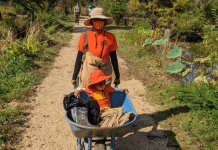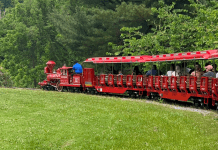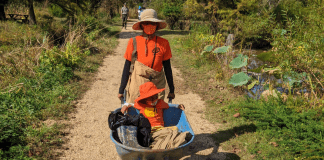As a parent, when I think of the My School DC common lottery, I don’t think of Powerball. I’m thinking about the DC school lottery. Instead of winning an extra scratch-off card or several million dollars, I can win a seat in a school for my kid. The District of Columbia has school choice, which means parents have the option of enrolling their child in any DC public or public charter school. In-boundary K through 12 students have guaranteed placements, so they don’t have to go through the lottery in order to enroll in a program. Schools have a number of seats available for particular grades. There is a city full of kids who are competing for those limited number of seats.
How The School Lottery Works
The My School DC team produced a video that does a great job explaining how the My School DC common lottery and waitlist works.
Figuring Out What A Kid’s Chances Are
Okay. We’ve got our list of schools and ranked them in order of what we think is best for our family. The next question is: What are our kid’s chances of getting into their top-ranked schools? Having some idea could play a role in how many safety schools to add to the application. Schools should not be ranked by how hard it is to get in.

A school’s waitlist history is a useful tool that parents can use. There is a drop-down list for the public and charter schools that participate in the My School DC common lottery. Parents can see how many seats were made available for a particular academic year. They can look as far back as the 2014-15 academic year to get a sense of a school’s waitlist trends. DCPS has a tool to compare school waitlists.
Let’s look at an example. Say a Petworth family looking for a school for their Kindergartner. They’re in the boundary for Powell Elementary School but prefer Barnard Elementary School and E.L. Haynes Elementary Public Charter School. According to the data, Barnard had 10 Kindergarten lottery seats with a waitlist of 11. By August there were 10 offers made, so chances look fairly decent for Barnard. E.L. Haynes had 8 Kindergarten seats with a waitlist of 94. By August, E.L. Haynes made seven offers. In this scenario, Barnard looks like a possibility.
The good news is that most families get matched to one of their top 3 choices. Nearly half got matched to their #1 choice for the 2019-2020 school year.
Lottery Preferences Improve Chances
Different schools have different preferences that bring students to the top or send them down the waitlist. Neighborhood schools have an in-boundary preference for Pre-K students. Charter schools may have preferences for children of staff. Many schools tend to have sibling preferences. That is when one sibling is already attending the school.
It’s possible to dig really deep into DCPS data to see if preferences help. I found an Excel spreadsheet on the DCPS site for the 2019-20 April lottery results.
Sibling Offered/Sibling Attending
To show the power of siblings, I will make examples of two competitive Pre-K3 programs without a boundary preference, School-Within-School @ Goding and Capitol Hill Montessori School @ Logan. There were 919 applications for 25 seats at Goding. Capitol Hill Montessori @ Logan had 665 applications for 53 seats. Goding matched 13 applicants who already had a sibling attending that school and one applicant with a sibling who had an offer to attend Goding. So over half of the available seats were offered to siblings at Goding. Siblings already at Capitol Hill Montessori are a powerful asset for their brothers and sisters. There were 14 matches for siblings attending and 4 for siblings offered.
Pre-K is not guaranteed like Kindergarten. When I look at the data, I still see siblings have an advantage over only children like my Junior when it comes to the My School DC common lottery. But even having an attending sibling is no guarantee a student won’t wind up on the Pre-K waitlist at a neighborhood in-boundary school. For example, at Oyster-Adams Bilingual School (English Dominant) there were 14 in-boundary kids with siblings already attending who were on the waitlist for 3 of the Pre-K4 seats.
In-Boundary/Proximity
Parents have a better chance for in-boundary Pre-K at less competitive neighborhood schools. And of course, their investment of moving within the boundary of a high performing school is rewarded with a guaranteed seat. Elementary school students who live over a 1/2 mile from their in-boundary school, have a proximity preference for a closer DCPS elementary school.
Charter School-Specific Preferences
Unfortunately, I couldn’t find the same sort of detailed waitlist data for charters, as I could for DCPS schools. The My School DC website for individual schools will state that school’s other preference. Like DCPS schools there is a sibling preference.
There are also plenty of charter preferences that don’t show up in the common lottery application. For example, at Mundo Verde Public Charter School, children of District of Columbia International School staff and DCI siblings have a preference. According to Bridges Public Charter School, it “has an additional lottery preference for high-level special education students to gain entry into our high-level special education classrooms.” I don’t fully understand the transfer preference, but it’s a thing for large charter networks like KIPP and Friendship schools.
Conclusion
There is no need to panic about the My School DC common lottery. As I mentioned before, most kids get matched to one of their top three choices and a little over half get into their first choice. From Kindergarten on, in-boundary kids don’t have to even participate in the lottery. With twelve possible choices and a city full of good and decent schools with a variety of programs no one will be left out. So the chances of getting into the right school for your child looks pretty good.













